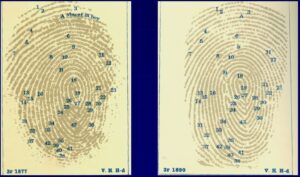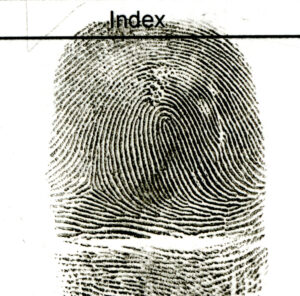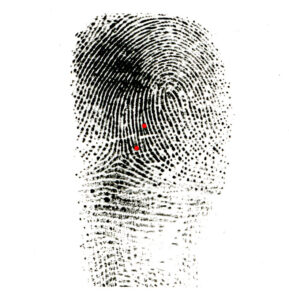
Published on September 20, 2017
Live scan devices are machines that scan the fingerprints and palm prints of a person and then, in most cases, they forward the processed images to an Automated Fingerprint / Palm print Identification System (AFIS/APFIS) for a search against the records contained within the AFIS’s database. These devices have been used by law enforcement for a long time.
The intent behind the use seems legitimate enough, they allow law enforcement a fast means of identifying a given individual, thus avoiding extra paperwork and processes. They seem to provide nice clean images as compared to the ink and paper method of obtaining fingerprints and palm prints. But what about the pitfalls? In the book Scotts Fingerprint Mechanics by Robert D Olsen Sr. there are many examples of the cause – effects of taking poor ink and paper fingerprints but the industry has been muted when it comes to poor live scan images.
Live scan images are not fingerprints per se, they are finger scans. An optical block scanner is connected to a computer which has software that controls the process with assistance from the person taking the finger scans. Once the images are captured they are processed to “cleanup” the image and to enhance the contrast to make the image easier for an AFIS to process the image when it receives it.
One of the problems with this process is that, like all methods of obtaining or creating fingerprints, is that occasionally level two features are created that do not exist. These level two features are known as artifacts. Latent print examiners need to be able to account for these features in an honest and logical manner. In short, they explain their existence because they can, not because they must. When a live scan system cleans up the evidence in support of the artifact they leave latent print examiners with the problem of determining if the feature is real or not. This becomes critical in a marginal latent environment.
Artifacts are well known in the fingerprint science world. They have been evident almost at the outset of fingerprint being used as means to identify people. The earliest known artifact is visible in Sir Francis Galton’s book Finger Prints where he shows the fingerprint of a toddler who was printed when he was nearly three and then again when he was fifteen. The intent of the exercise was not to show an artifact but to show the persistency of friction ridge formations.
The feature he marked “A Absent in boy” (top left) is an example of an artifact. This artifact was created by the ink and paper method of acquiring fingerprints. The thicker ridges and drag marks seen to the right of the feature show the movement that was made during the acquisition of the print.

A live scan image would clean up the thicker ridges and drag marks and leave us with no ability to account for the feature “A Absent in boy”.
There are only two ways to account and reconcile the presence of a level two artifact feature.
1) Is to articulate the cause-effects of the feature. Such as a related smudge, drag marks, thickening of the ridges etc.
2) Is to have such overwhelming agreement elsewhere between the latent and the known record that it would be impossible for the artifact to be real.
As previously stated, the ability to articulate an artifact is far more challenging in a live scan image.
The following question will illustrate the point.
Do you, as a latent print examiner, believe you can spot a level two artifact in a known record?
Assuming there are not recidivist records of the same individual available, would you agree with the following statement?
If you cannot identify a level two artifact in a known live scan record how can you reliably use other level two features on the same record? Again, this issue is extremely problematic in a marginal latent environment.
Let’s see some examples;

This is a live scan image, see if you can spot the artifact before you see it on the subsequent image.
The red dot shows where the artifact is.

The Inked impression of the same individual.

Another example: The live Scan image.

The red dots show where the artifacts are located.

The Inked impression.

If you did not spot the artifact(s) before you saw the answer you would not be alone. Imagine having to reconcile these images in a marginal latent environment.
More often than not, artifacts are found near the tips of the finger images above the cores but as the examples show, not always. There are many problems with live scan records that need resolving. Level two artifacts remain the most pressing reason why a change is needed away from creating two-dimensional images in favor of three-dimensional records. We’ve had many years of experience with live scan systems and the records they create and still the issue of live scan artifacts remains thorny and unresolved. In my opinion, there are many legitimate uses for two-dimensional electronic fingerprint and palm print scanners but when it comes to the use of a live scan created record for comparisons to latent prints, these devices can sometimes be our worst enemy.
Shane Turnidge
